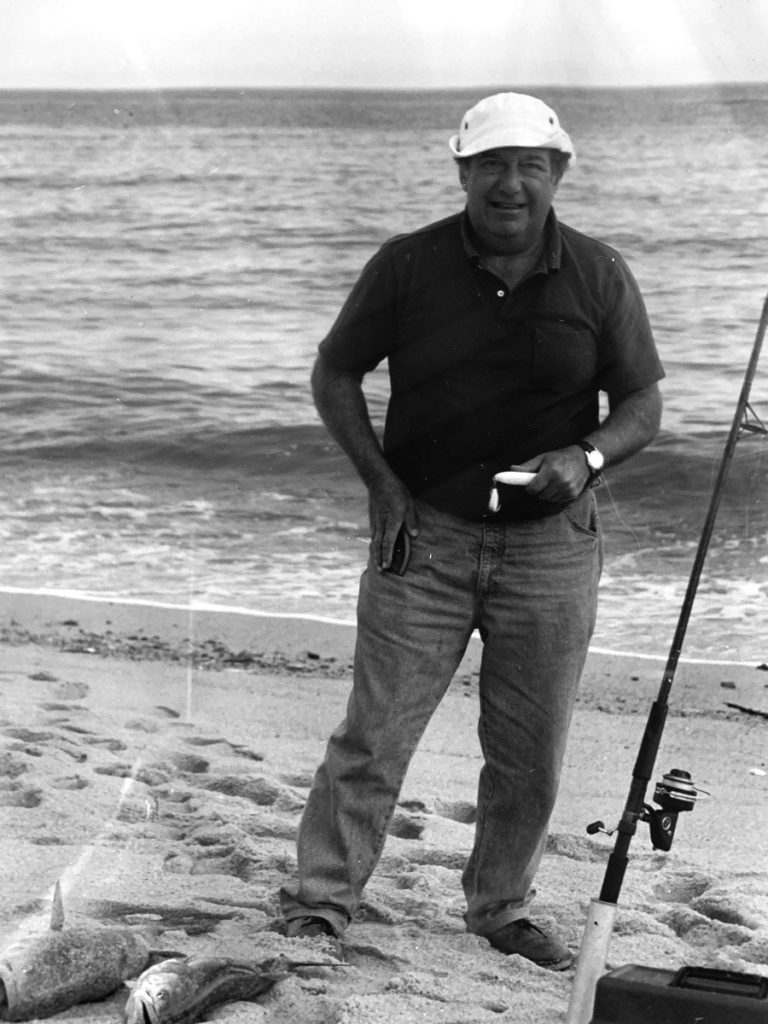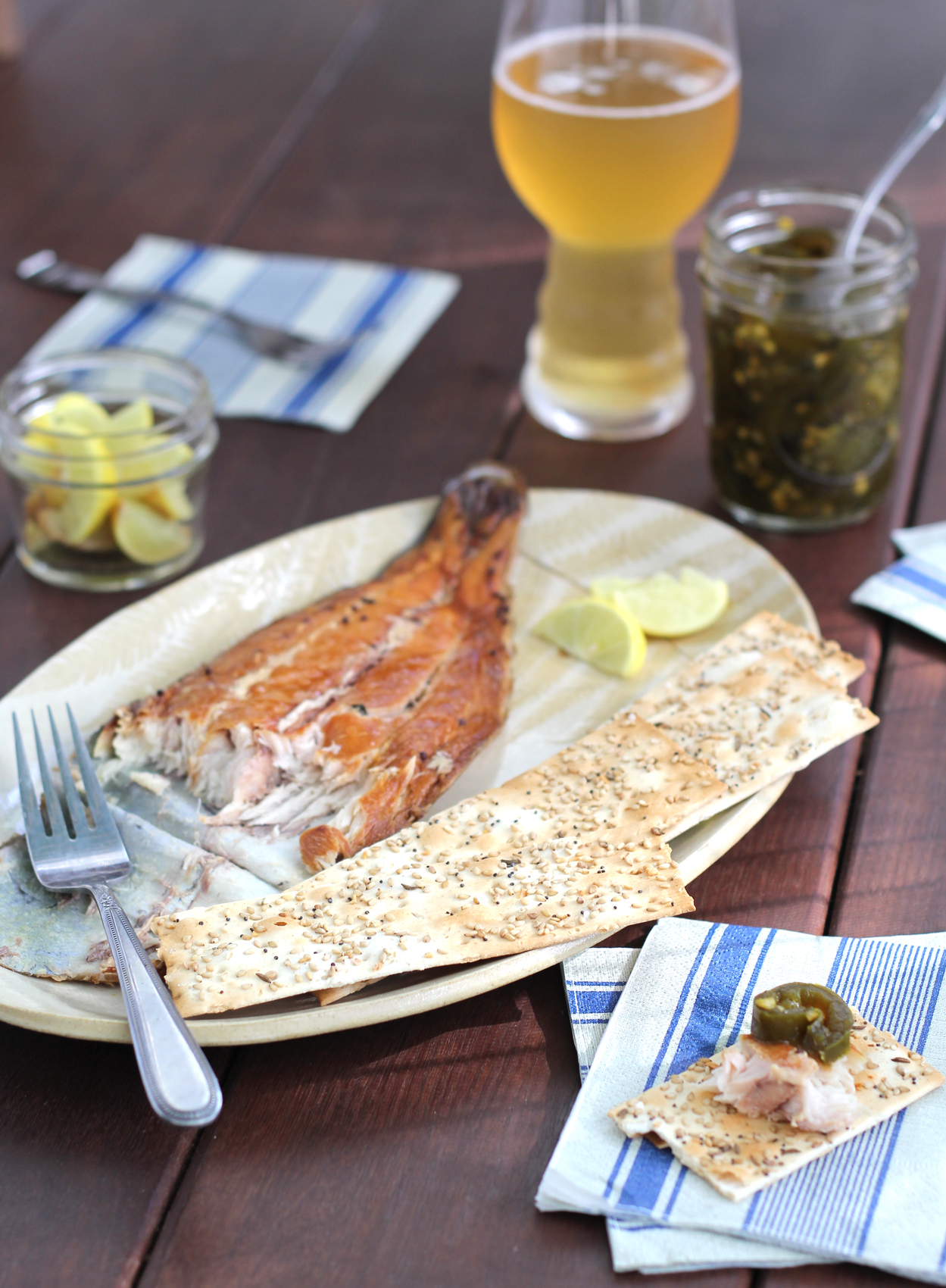

You can find some great information online at a very resourceful site. If you don’t already have one, invest in the best smoker you can afford. This will dry the outer layer of flesh and result in a nice shiny glaze (called a pellicle) that lets you know the fish is ready for the smoker. Lay all of those nice fillets on a baking sheet lined with paper towels, and put it into the refrigerator for at least 2 hours. The next step seems insignificant, but will make a big difference in improving the final product. (This is also a good time to trim them up and remove any bones that remain from the rib cage.) Make the extra effort to wipe off any scales that are stuck to the meat-side of the fillets. When the brining time is complete, rinse the fillets under cold water and dry them thoroughly with paper towels. Sprinkling a little brown sugar on them will help form a nice glaze on the finished product. After your fillets have soaked in brine, it’s important to dry them for a few hours in the refrigerator before putting them on the smoker. Soak large fillets (bluefish, salmon, lake trout, etc.) for about 6 hours, and small fillets, like trout or mackerel, for 3 to 4 hours. Place all of your fillets in a nonreactive container, top it off with the cooled brine solution and place it in the refrigerator. Or apple juice will work as a substitute) Here’s the one I use, which will handle 5 to 6 pounds of fillets. There are hundreds of recipes out there that can be easily found online. Many people simply use salt, water and sugar, but I like to spice it up a bit. The brine adds both a sweet and salty flavor to the fish and helps it retain moisture. Brine timeīrining the fillets is a crucial step.
SMOKING BLUEFISH SKIN
(I recently made a batch with fresh lake trout and it was phenomenal.) Always leave the skin on, as it will help prevent the fillets from sticking to the grates. Oily fish are ideal for smoking, and my favorites include bluefish, mackerel, bonito, rainbow trout and salmon. If you’re going to invest the time, you might as well make up a big batch and fill up the racks.

Because of this, I like to load up the smoker with as much fish as possible. Smoke ‘em if you got ‘emĬreating a batch of quality smoked fish is a long process and can be an all-day affair. Make sure to poke some holes to allow for better circulation. Lining the racks with foil will help prevent sticking and make clean-up easier. Soaking your wood also slows down the burning process and emits added moisture, which can have negative effects on the smoking process. The wood retained only a measly 3 percent additional weight, and when cut in half, it revealed that the water (which had food coloring in it) had penetrated merely 1/16 of an inch. One BBQ aficionado who goes by the name of Meathead Goldwyn conducted a test and soaked a chunk of dry cherry wood in water for 12 hours. The amount of water the wood actually absorbs is insignificant, and doesn’t make a bit of difference. It’s a myth and a waste of time,” was Patrick’s thought on the matter. I had always been under the impression that soaking the wood chunks in warm water for an hour or two was standard protocol with any type of smoking. If it’s gray or black, something has gone horribly wrong. He reiterated the importance of not overdoing it your smoker should emit subtle “blue” smoke – it should never be pure white. I also learned that chunks of wood are better than small chips, which burn hotter and can produce too much smoke. As far as mesquite goes, he says, “Stay away! It’s too strong and overpowering.” Paquette told me none of the seasoned pros he knows use mesquite. He also explained to me that hickory produces more potent smoke and is better suited for hearty (or fatty) meats like pork. “They all taste pretty much the same, but cherry adds a bit more color and will make the finished product come out a little darker,” he proclaimed. For fish and poultry, he prefers hard fruitwoods such as apple, pecan, or his favorite, cherry. Paquette also schooled me on using the proper wood to match what you are smoking. A couple 3-pound blues are the perfect size for smoking.

Keep a keen eye on it toward the end of the process. Your smoker should stay below 225 degrees, and the fish should not be cooked at a temperature higher than 150 degrees. Food that has been over-smoked is too dry and has a harsh, bitter aftertaste.Ī good digital thermometer is a crucial gadget for serious smokers. Yes, you want a nice smoky overtone to the finished product, but you should still maintain the delicacy of the fish and not overwhelm it. According to Paquette, the number one mistake people make when smoking fish is that they simply overdo it.


 0 kommentar(er)
0 kommentar(er)
